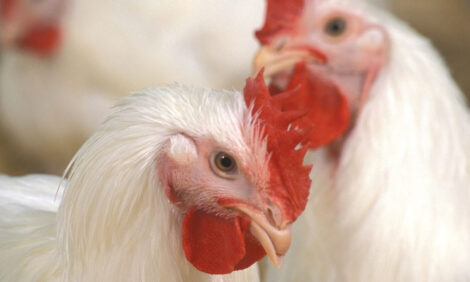



Fat Recovery From Wastewater
By William C. Merka, Extension Poultry Scientist, The University of Georgia - Processors may have a source of broiler fuel that is easy to recover by extracting the fat from wastewater.
A typical large poultry processing plant will discharge 20 to 25 thousand pounds of organic material (dry weight) in the wastewater each day. Analysis of the organic material in the water has shown that they are composed of 55 to 60 percent
fat.
This represents 11,000 to 15,000 pounds of fat each day or at 7.5 pounds per gallon, 1400 to 2000 gallons of chicken fat that is either being turned into dissolved air flotation skimmings (DAF) or sent to costly biological treatment systems.
Research at the University of Georgia was conducted where a fermentable carbohydrate was added to ground offal and held for 2 days at 100 degrees F. During fermentation, ground offal with the consistency of wet hamburger meat was changed to a free flowing product like salad dressing. With mild centrifugation, a clear yellow layer of pathogen free fat was produced.
Current research at UGA is evaluating methods of recovering this fat by micro screening and air only flotation. Recovery of this fat for broiler fuel can be an economical way to recover 40-50 barrels a day in a consistently replenishable supply.

Source: University of Georgia - Poultry Science - March 2006









